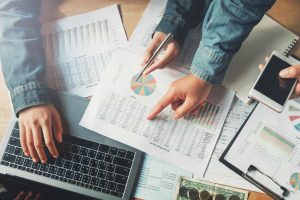Charlotte tax preparer is sentenced to prison for scheme to obtain 780,000 dollars in fraudulent coronavirus relief funds and money laundering Internal Revenue Service
Well-known Asian Love Stories
March 15, 2022What Is an Independent Contractor Management System?
March 16, 2022
If you haven’t received the first and second COVID-19 stimulus payments – or haven’t claimed the full amount for which you are eligible – you must file a 2020 tax return and claim the Recovery Rebate Credit in order to claim those payments. Filing a 2020 tax return will also give the IRS the information it needs to send you the third round of payments. Even though the government has provided some intermittent assistance during the coronavirus pandemic — stimulus checks and expanded unemployment benefits — millions of Americans are having trouble making ends meet. Whether it’s paying the mortgage, keeping the lights on or simply buying groceries, millions of people are in dire need of cash. Yes, after the deferment period ends, you will need to start making principal and interest payments on Covid-EIDL loans 30 months from the notice. There are scenarios where you may be able to qualify for forgiveness so it is important to check before making payments.
- To that end, the Consumer Financial Protection Bureau is working on a new regulation that will require lenders to collect racial demographic data on small business loan borrowers.
- The CAA further provided that ordinary and necessary business expenses that were paid with a forgivable PPP loan were completely deductible.
- Nearly 40% of PPP loans made by CDFIs were in low- and moderate-income areas compared to the program’s average of 28%, the SBA reported in 2021.
- After Congress passed the CARES Act in March 2020 to provide a range of relief aid to businesses and individuals, Metzler was able to secure a $100,000 forgivable, low-interest and uncollateralized PPP loan, money he used to pay staff and catch up on rent.
- But in 2021, more loans went to lower-income neighborhoods of the city—to beauty salons, barber shops, day care centers and other more vulnerable enterprises, according to a Bloomberg analysis of Small Business Administration data updated last month.
Government programs allow for forgiveness up to certain amounts for COVID-19-related loans if borrowers meet certain requirements. Take the time to explore the criteria to determine if you qualify and take advantage of possible financial relief. Yes, there is a pause on student loan repayment during the COVID-19 pandemic, which suspends loan payments at a 0% interest rate and a stop on collections of defaulted loans through Dec. 31, 2022. Any part of your PPP loan that is not forgiven must be paid back, either immediately, in the case of non-permitted use, or in the form of a five-year loan at 1% interest. Loan payments on permitted use, including principal, interest, and fees are deferred until the SBA remits your forgiveness amount to you or if you do not apply for forgiveness, for 10 months from the end of your loan-forgiveness-covered period.
Government Shared Services
This relief comes on the heels of a range of targeted actions the Education Department has implemented over the past year to get more relief to borrowers. For example, the department announced in February that 153,000 borrowers would get $1.2 billion in debt relief — a result of a new provision of the new SAVE income-driven repayment plan that shortens the timeline for borrowers to see debt cancellation. Biden will email impacted borrowers next week to congratulate them on their relief.
- Kanye West and football player Tom Brady notoriously got relief aid, as did fast food chain Shake Shack, which returned its loan after a public outcry.
- Another example would be interest on non-mortgage debt in place on Feb. 15, 2020.
- Eligible applicants may qualify for 45% of their gross earned revenue, with a maximum amount available of $10 million per grant, and $2 billion is reserved for eligible applicants with up to 50 full-time employees.
- And because so many CDFIs were involved in the program, the loans offer unprecedented granularity into borrower demographics, instead of using zip codes as proxies for race or ethnicity.
- Borrowers who meet those income standards but did not receive a Pell Grant in college can receive up to $10,000 in loan relief.
- They’re both installment loans that require you to repay the money you borrow and any applicable interest within an agreed-upon time frame.
- “With this announcement, the Biden-Harris Administration is showing how we’re taking further steps not only to fix those trap doors, but also to expand opportunity to many more Americans.”
Unlike PPP loans, EIDL loans are not forgiven, so businesses have to repay them. The Small Business Administration let recipients defer payments for up to two-and-a-half years, which means this year, payments are starting to come due. The CFPB contends that better data on small business loans will ease access to capital by allowing policymakers to more effectively target aid programs. The hope is that with transparency, more small businesses and local economies will prosper—and in a more equitable society. Banks are normally not required or allowed to collect racial or ethnic data on small business borrowers, unlike with mortgage borrowers where that information is collected under federal law. But CDFIs have a special mandate to serve underserved communities and often gather such data.
Non-forgivable Expenses
The Emergency Rental Assistance program makes funding available to government entities to assist households that are unable to pay rent or utilities. The American Rescue Plan is delivering direct relief to the American people, rescuing the American economy, and starting Pandemic Relief Loans to beat the virus. Credit unions are currently offering some of the lowest interest rates — but you’ll need to be a member to apply. And while most national banks offer these types of loans, you may be required to have an existing account in good standing.



